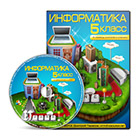Distance education
Distance education is a term used in relation to a wide range of educational programs and courses, ranging from refresher courses without accreditation, to accredited higher education programs that enable students to closely interact with their teachers and fellow students, as is the case with full-time study. In order to ensure effective interaction, a whole set of tools is used in distance learning, including interactive computer programs, the Internet, e-mail, telephone, fax and regular mail.
Distance learning is primarily the interaction of students and teachers with each other at a distance (remotely), while this TO reflects almost all of the components inherent in the educational process (methods, goals, organizational forms, content, and often learning tools) and implemented by specific means telecommunication technologies that involve an interactive learning process.
Distance education is becoming an extremely popular form of education because of its convenience and flexibility. It removes the main barrier that keeps many professionals and business people from continuing education, eliminating the need to attend classes on a fixed schedule. Students remotely can choose a convenient time for themselves according to their own schedule.
The Basics of Successful Distance Education
There are three main characteristics of a quality distance education program for adult students:
1.Course Structure
A quality distance education program does not just copy the lecture program, providing the opportunity to read them on a computer screen. Instead of simply duplicating the full-time study program, the course should be carefully organized in such a way as to specifically involve the student. At the same time, many students begin to feel that they are more involved in the learning process than they have ever been involved in, studying full-time. The structure of the course should provide you with more opportunities to manage the learning process than would be possible with full-time education. The course should be focused on the student, allowing the student to set the course content according to his personal needs and objectives.
2.Means and methods of communication
A distance education program may involve a whole range of ways to deliver information, including regular mail, telephone | fax, Internet, email, interactive television, newsgroups, and audio and video conferencing. Communication methods should be as consistent as possible to your learning style. Training courses can be synchronous or asynchronous.
Synchronous courses require the simultaneous participation of teachers and students and their interaction in real time. The means of information delivery in this case include interactive television and video conferencing. Asynchronous methods, as opposed to synchronous, are very flexible and allow the student to choose the time convenient for him to work on the course material. Programs that use asynchronous methods of interaction involve the use of the Internet, e-mail, videotapes and regular mail.
3.Support and contact with students
In contrast to the ideas of many, students studying a good distance education program should not feel isolated from each other. A quality program involves many ways and methods for creating a real atmosphere of interaction. When choosing a distance education program, ask how students receive help and support from their instructors. Good distance learning creates the feeling that the faculty is more easily accessible than with the usual form of education. Make sure there is online support, chat rooms and forums, online bulletin boards, online stores and other student counseling and support tools.
Types of distance education programs
Educational institutions offering distance education programs can be divided into three categories:
"Natural" distant universities
For example, in the USA, there are not too many such educational institutions offering bachelor’s and master’s degree programs. Decent educational institutions have the necessary accreditation. At the same time, there are also non-accredited programs, so it is important to find out what kind of accreditation a particular program has of interest.
Providers of corporate training and / or refresher courses
These organizations conduct trainings, programs leading to obtaining a certificate and other educational programs designed to develop any professional skills. These are, as a rule, non-accredited programs formed in accordance with the individual requirements of clients. Thus, this type of educational institution offers a program of very different quality. Therefore, in this case, it is important to find out as much as possible about the structure of the course, the means and methods of communication, as well as to know how organized and supported the students are.
Traditional universities offering online education
Many traditional universities and colleges have recently begun to offer their programs online, thus expanding the list of proposed.

 Получите свидетельство
Получите свидетельство Вход
Вход












 Distance education (13.91 KB)
Distance education (13.91 KB)
 0
0 95
95 0
0 Нравится
0
Нравится
0


